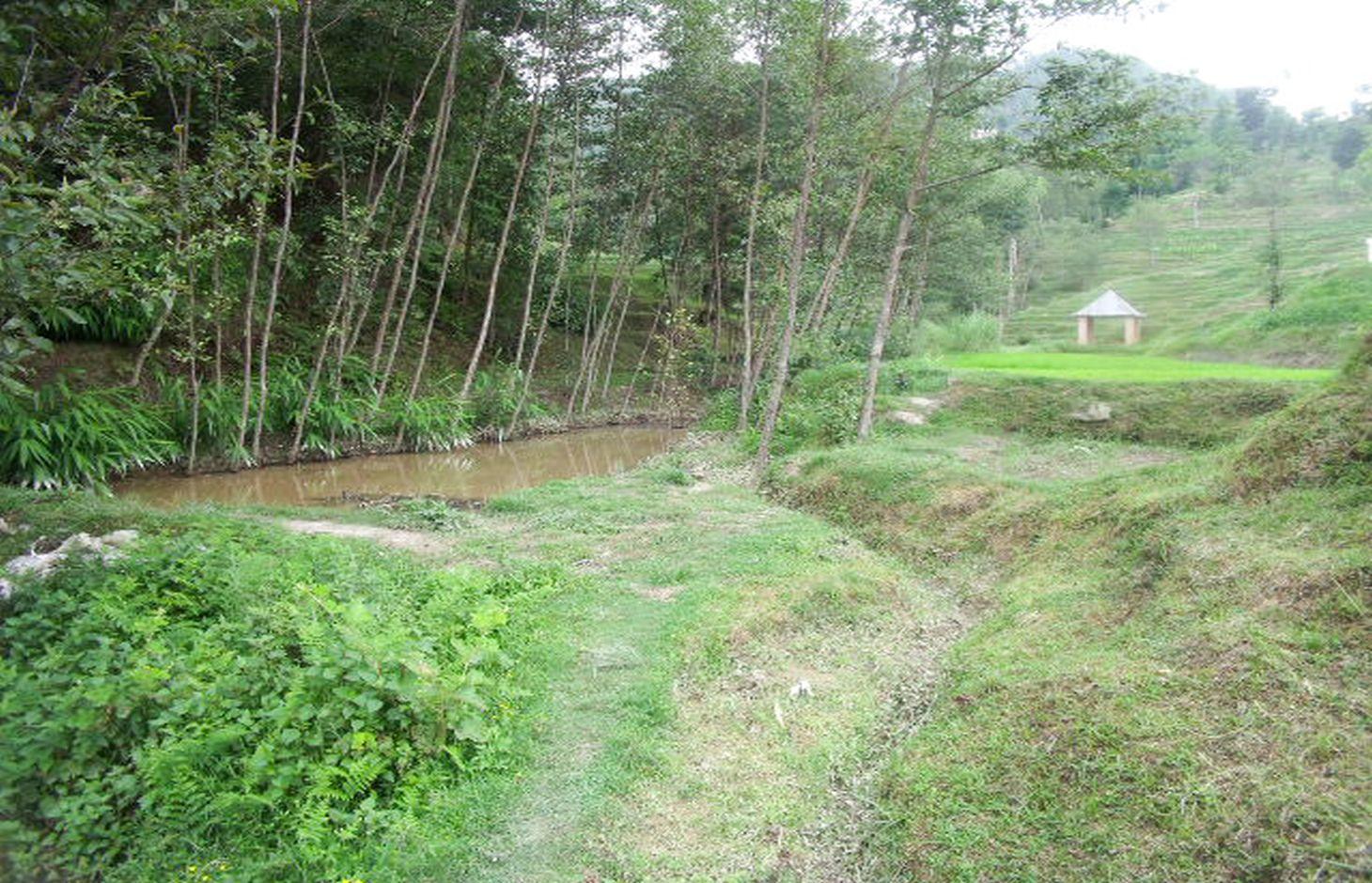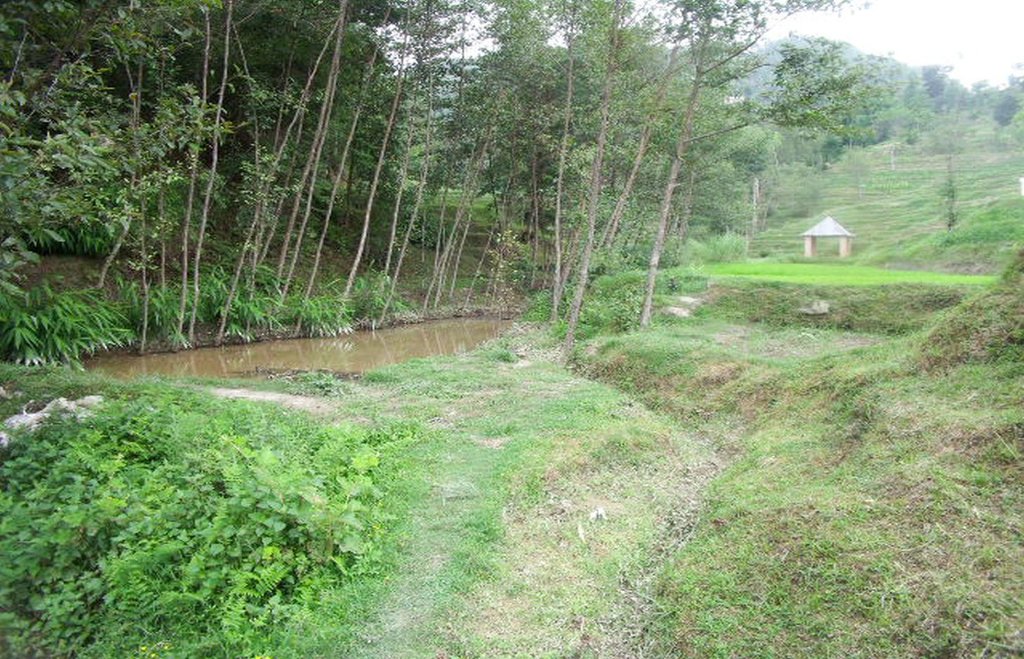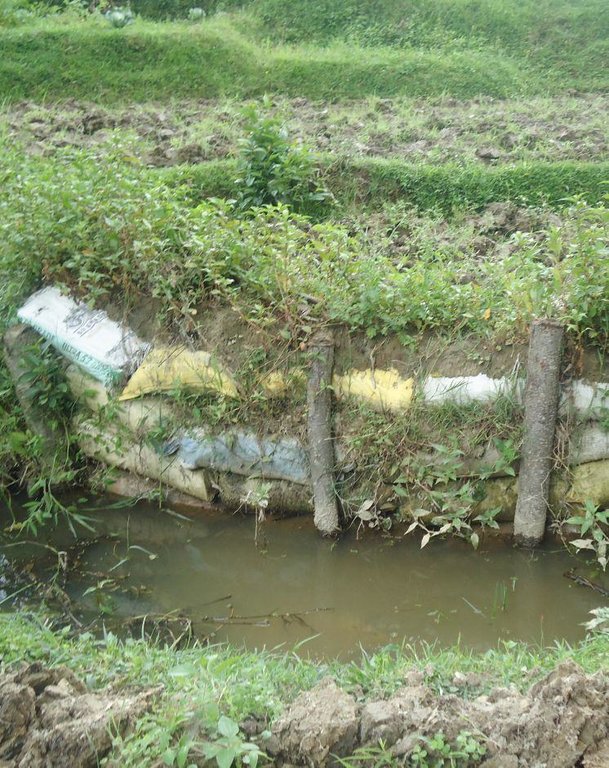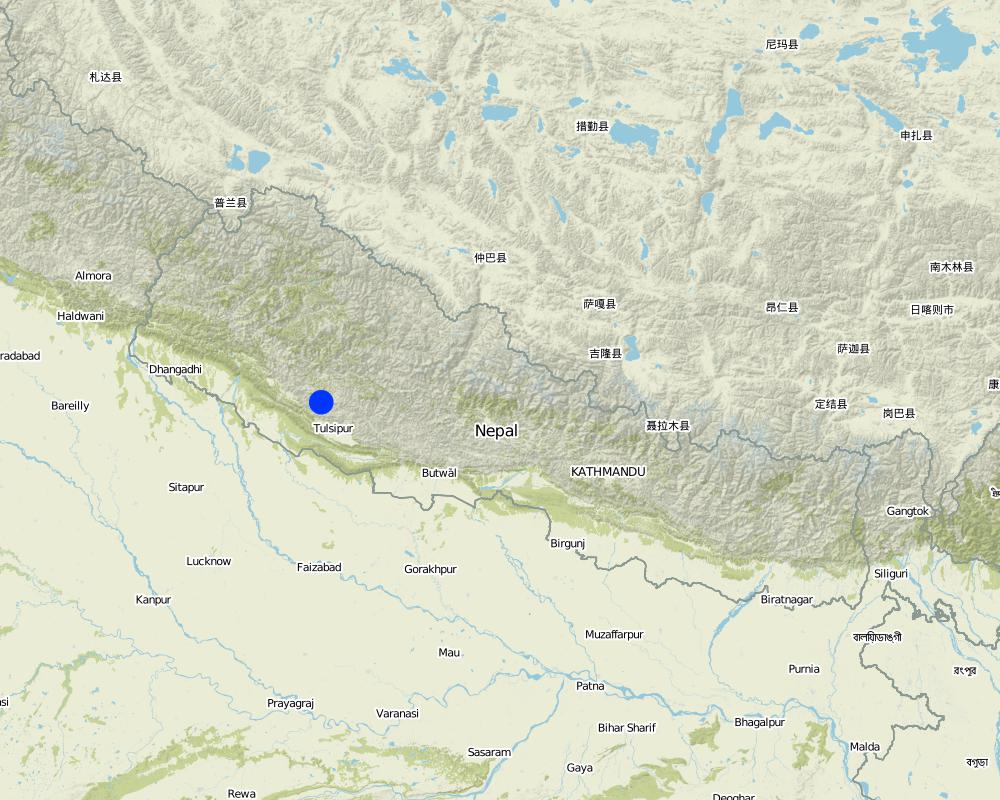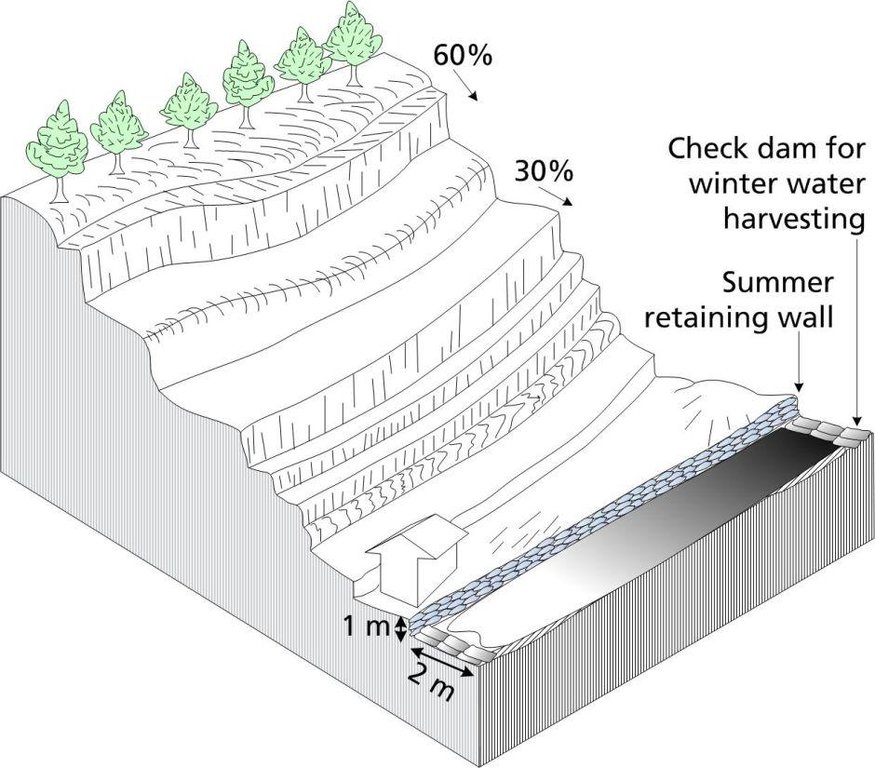Sustainable land management using controlled gullying [尼泊尔]
- 创建:
- 更新:
- 编制者: Shreedip Sigdel
- 编辑者: –
- 审查者: David Streiff, Alexandra Gavilano
Jagidol chetra ma kholsi sudhar dwara digo bhu bewasthapan (Main Contributor: Sabita Khanal, Kathmandu University)
technologies_1684 - 尼泊尔
查看章节
全部展开 全部收起1. 一般信息
1.2 参与该技术评估和文件编制的资源人员和机构的联系方式
SLM专业人员:
有助于对技术进行记录/评估的机构名称(如相关)
Kathmandu University (KU) - 尼泊尔有助于对技术进行记录/评估的机构名称(如相关)
ICIMOD International Centre for Integrated Mountain Development (ICIMOD) - 尼泊尔1.3 关于使用通过WOCAT记录的数据的条件
编制者和关键资源人员接受有关使用通过WOCAT记录数据的条件。:
是
1.5 参考关于SLM方法(使用WOCAT记录的SLM方法)的调查问卷
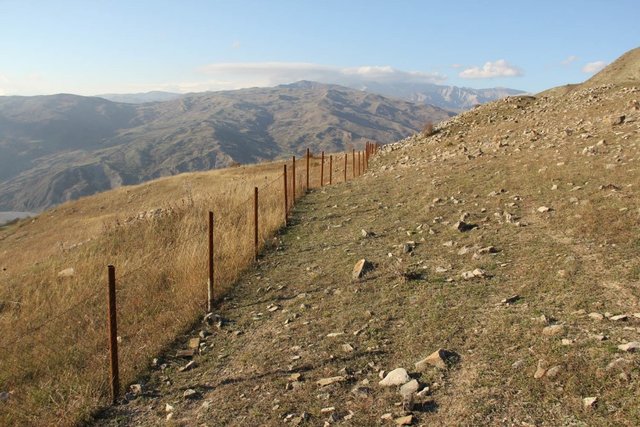
Community-based approach in Erosion Control [阿塞拜疆]
The unsustainable use of pastures and forest areas leads to erosion, degradation, desertification and loss of biodiversity in high mountain areas of the South Caucasus. In the village Ehen in the Ismayilli district in Azerbaijan, a community-based approach for erosion control was developed in a participative way. Together with village …
- 编制者: Hanns Kirchmeir
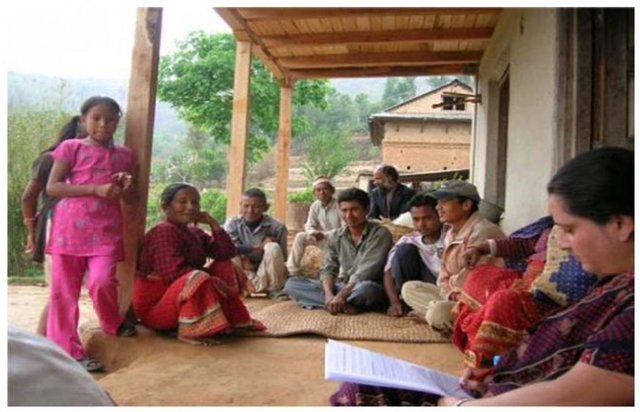
Protected gullies – a traditional sustainable land management … [尼泊尔]
Protected gullying is a sustainable land management practice initiated and maintained by the traditional community approach; it is based on indigenous knowledge and uses only locally available materials.
- 编制者: Shreedip Sigdel
2. SLM技术的说明
2.1 技术简介
技术定义:
An indigenous technology to help control channelled water during the rainy season and conserve it during the dry season
2.2 技术的详细说明
说明:
For more than two centuries, local farmers have promoted soil and water conservation by protecting the gullies which occur naturally between rice terraces; thus the land area is called ‘jagidol’ (jagi=rice, dol=gully). The small perennial streams which flow through the terraces are protected by constructing check dams and retaining walls to reduce the danger of erosion and collapse.
Purpose of the Technology: During the monsoon, the channels or trenches can become engorged and, since their walls are not reinforced (except for grass planted at the edges), the conduits can be easily eroded. When the erosion is severe enough, the edges of the terraces adjacent to the gullies can collapse. When many gullies collapse at once, the stability of the entire hillside is threatened with catastrophic consequences for the village situated above the planting area. Villagers have traditionally used local materials and expertise to maintain the gullies and reduce soil erosion by building retaining walls across the slope which are strengthened through plantation. The retaining walls are bio-engineered using a combination of bamboo poles, rocks, and soil-filled sacks. Bamboo poles are used for the backbone of the support structure, and rocks and soil-filled sacks are used to line the sides of the channel. Local grasses such as 'sitto' are planted on the top and, as they grow, their roots help to anchor the structure. When the channels are fortified by retaining walls and planting, they become entrenched and, over time, less maintenance is required. As a bonus, when the plants grown along the gullies mature, they provide biomass for the farm and fodder for cattle. During winter, when water is scarce, farmers modify the gully system by constructing check dams which can be used to collect water in one place. These dams are useful for irrigation during the dry season and they also help to prevent bed scouring.
2.3 技术照片
2.5 已应用该技术的、本评估所涵盖的国家/地区/地点
国家:
尼泊尔
有关地点的进一步说明:
Sharada Batase VDC, Kabhrepalanchok District
具体说明该技术的分布:
- 适用于特定场所/集中在较小区域
注释:
Total area covered by the SLM Technology is 1.1 km2.
Map
×2.6 实施日期
如果不知道确切的年份,请说明大概的日期:
- 50多年前(传统)
2.7 技术介绍
详细说明该技术是如何引入的:
- 作为传统系统的一部分(> 50 年)
3. SLM技术的分类
3.1 该技术的主要目的
- 降低灾害风险
3.2 应用该技术的当前土地利用类型

农田
- 一年一作
每年的生长季节数:
- 2
具体说明:
Longest growing period in days: 200; Longest growing period from month to month: March-september; Second longest growing period in days: 120; Second longest growing period from month to month: October-January

森林/林地
产品和服务:
- 木材
- 薪材
- Fodder

水道、水体、湿地
- 排水管道、水道
注释:
Major land use problems (compiler’s opinion): As the land is continuously eroded, both farmland and inhabited areas will slowly slide downhill.
Forest products and services: timber, fuelwood
Other forest products and services: Fodder
Constraints of wastelands / deserts / glaciers / swamps
Livestock density: < 1 LU/km2
3.4 供水
该技术所应用土地的供水:
- 混合雨水灌溉
3.5 该技术所属的SLM组
- 横坡措施
- 引水和排水
3.6 包含该技术的可持续土地管理措施

植物措施
- V2:草和多年生草本植物

结构措施
- S5:大坝、集水斗、水池
3.7 该技术强调的主要土地退化类型

土壤水蚀
- Wg:冲沟侵蚀/沟蚀
注释:
Main causes of degradation: crop management (annual, perennial, tree/shrub), deforestation / removal of natural vegetation (incl. forest fires), over-exploitation of vegetation for domestic use
3.8 防止、减少或恢复土地退化
具体数量名该技术与土地退化有关的目标:
- 减少土地退化
4. 技术规范、实施活动、投入和成本
4.1 该技术的技术图纸
技术规范(与技术图纸相关):
A jagidol area showing the approximate slope, bench terraces, and basic geometry of the landscape. With the shrine shown as in the photograph of the site.
Technical knowledge required for land users: moderate
Main technical functions: control of concentrated runoff: drain / divert, stabilisation of soil (eg by tree roots against land slides), water harvesting / increase water supply
Secondary technical functions: improvement of ground cover, spatial arrangement and diversification of land use
作者:
Duncan Scott, A. K. Thaku
4.2 有关投入和成本计算的一般信息
具体说明成本和投入是如何计算的:
- 每个技术区域
注明尺寸和面积单位:
sq km
具体说明成本计算所用货币:
- 美元
注明雇用劳工的每日平均工资成本:
4.50
4.3 技术建立活动
| 活动 | 时间(季度) | |
|---|---|---|
| 1. | Local grasses such as utis, sito, amrisho, daleghas, and bamboo, can be planted on top of the reinforcements. | |
| 2. | Construction of dam with mud-filled sacks Construction of stone dam and spillways• Construction of retaining wall• Construction of bunds and barrier |
4.4 技术建立所需要的费用和投入
| 对投入进行具体说明 | 单位 | 数量 | 单位成本 | 每项投入的总成本 | 土地使用者承担的成本% | |
|---|---|---|---|---|---|---|
| 劳动力 | Plant grasses | persons/day/sq km | 150.0 | 4.5 | 675.0 | 100.0 |
| 设备 | Equipment | sq km | 1.0 | 225.0 | 225.0 | 100.0 |
| 施工材料 | Material | sq km | 1.0 | 725.0 | 725.0 | 100.0 |
| 技术建立所需总成本 | 1625.0 | |||||
| 技术建立总成本,美元 | 1625.0 | |||||
4.5 维护/经常性活动
| 活动 | 时间/频率 | |
|---|---|---|
| 1. | Continue to reinforce by planting with local grasses or bamboo on top of the structures until the plantings are well established. |
4.6 维护/经常性活动所需要的费用和投入(每年)
| 对投入进行具体说明 | 单位 | 数量 | 单位成本 | 每项投入的总成本 | 土地使用者承担的成本% | |
|---|---|---|---|---|---|---|
| 劳动力 | Reinforce by planting on structure | persons/day/sq km | 50.0 | 5.0 | 250.0 | 100.0 |
| 设备 | Equipment | sq km | 1.0 | 70.0 | 70.0 | 100.0 |
| 施工材料 | Material | sq km | 1.0 | 350.0 | 350.0 | 100.0 |
| 技术维护所需总成本 | 670.0 | |||||
| 技术维护总成本,美元 | 670.0 | |||||
4.7 影响成本的最重要因素
描述影响成本的最决定性因素:
The construction and maintenance of gullies demands attention during a busy agricultural calendar and can significantly add to the labour costs depending on the size and number of gullies and dams that need to be constructed and maintained.
5. 自然和人文环境
5.1 气候
年降雨量
- < 250毫米
- 251-500毫米
- 501-750毫米
- 751-1,000毫米
- 1,001-1,500毫米
- 1,501-2,000毫米
- 2,001-3,000毫米
- 3,001-4,000毫米
- > 4,000毫米
农业气候带
- 半湿润
Thermal climate class: subtropics
5.2 地形
平均坡度:
- 水平(0-2%)
- 缓降(3-5%)
- 平缓(6-10%)
- 滚坡(11-15%)
- 崎岖(16-30%)
- 陡峭(31-60%)
- 非常陡峭(>60%)
地形:
- 高原/平原
- 山脊
- 山坡
- 山地斜坡
- 麓坡
- 谷底
垂直分布带:
- 0-100 m a.s.l.
- 101-500 m a.s.l.
- 501-1,000 m a.s.l.
- 1,001-1,500 m a.s.l.
- 1,501-2,000 m a.s.l.
- 2,001-2,500 m a.s.l.
- 2,501-3,000 m a.s.l.
- 3,001-4,000 m a.s.l.
- > 4,000 m a.s.l.
5.3 土壤
平均土层深度:
- 非常浅(0-20厘米)
- 浅(21-50厘米)
- 中等深度(51-80厘米)
- 深(81-120厘米)
- 非常深(> 120厘米)
土壤质地(表土):
- 细粒/重质(粘土)
表土有机质:
- 高(>3%)
如有可能,附上完整的土壤描述或具体说明可用的信息,例如土壤类型、土壤酸碱度、阳离子交换能力、氮、盐度等。:
Soil fertility is high
Soil drainage / infiltration is poor
Soil water storage capacity is medium
5.4 水资源可用性和质量
地下水位表:
5-50米
地表水的可用性:
过量
水质(未处理):
不良饮用水(需要处理)
关于水质和水量的注释和进一步规范:
Water quality (untreated): Also for agricultural use only (irrigation)
Availability of surface water: During Monsoon
5.5 生物多样性
物种多样性:
- 高
5.6 应用该技术的土地使用者的特征
生产系统的市场定位:
- 生计(自给)
非农收入:
- > 收入的50%
相对财富水平:
- 平均水平
个人或集体:
- 个人/家庭
机械化水平:
- 手工作业
- 畜力牵引
性别:
- 女人
- 男人
说明土地使用者的其他有关特征:
Land users applying the Technology are mainly common / average land users
Population density: 10-50 persons/km2
Annual population growth: 0.5% - 1%
90% of the land users are average wealthy.
5.7 应用该技术的土地使用者使用的平均土地面积
- < 0.5 公顷
- 0.5-1 公顷
- 1-2 公顷
- 2-5公顷
- 5-15公顷
- 15-50公顷
- 50-100公顷
- 100-500公顷
- 500-1,000公顷
- 1,000-10,000公顷
- > 10,000公顷
这被认为是小规模、中规模还是大规模的(参照当地实际情况)?:
- 小规模的
5.8 土地所有权、土地使用权和水使用权
土地所有权:
- 社区/村庄
- 个人,有命名
土地使用权:
- 个人
用水权:
- 自由进入(无组织)
5.9 进入服务和基础设施的通道
健康:
- 贫瘠
- 适度的
- 好
教育:
- 贫瘠
- 适度的
- 好
技术援助:
- 贫瘠
- 适度的
- 好
就业(例如非农):
- 贫瘠
- 适度的
- 好
市场:
- 贫瘠
- 适度的
- 好
能源:
- 贫瘠
- 适度的
- 好
道路和交通:
- 贫瘠
- 适度的
- 好
饮用水和卫生设施:
- 贫瘠
- 适度的
- 好
金融服务:
- 贫瘠
- 适度的
- 好
6. 影响和结论性说明
6.1 该技术的现场影响
社会经济效应
生产
作物生产
饲料生产
生产故障风险
生产区域
注释/具体说明:
reduce risk of land degredation
水资源可用性和质量
灌溉用水的可用性
收入和成本
工作量
社会文化影响
文化机会
冲突缓解
agricultural benefits the whole community at many different levels including social-cultural
livelihood and human well-being
注释/具体说明:
improved agriculture leads to food sufficiency, enhanced economic conditions, and better health throughout the community. When households have more cash income they usually invest it in education for their children
生态影响
水循环/径流
水量
地表径流
土壤
土壤流失
生物多样性:植被、动物
生物量/地上C
栖息地多样性
害虫/疾病控制
减少气候和灾害风险
洪水影响
干旱影响
飓风、暴雨的影响
其它生态影响
competition for water, sunlight and nutrients
6.2 该技术的场外影响已经显现
下游洪水
Downstream Neighbor field also benefit from slop stability and soil conservation
6.3 技术对渐变气候以及与气候相关的极端情况/灾害的暴露和敏感性(土地使用者认为的极端情况/灾害)
渐变气候
渐变气候
| 季节 | 增加或减少 | 该技术是如何应对的? | |
|---|---|---|---|
| 年温度 | 增加 | 好 |
气候有关的极端情况(灾害)
气象灾害
| 该技术是如何应对的? | |
|---|---|
| 局地暴雨 | 不好 |
6.4 成本效益分析
技术收益与技术建立成本相比如何(从土地使用者的角度看)?
短期回报:
积极
长期回报:
非常积极
技术收益与技术维护成本/经常性成本相比如何(从土地使用者的角度看)?
短期回报:
非常积极
长期回报:
非常积极
6.5 技术采用
注释:
There is a moderate trend towards spontaneous adoption of the Technology
Comments on adoption trend: Communities throughout the area have adopted these structural measures for centuries without any external support. Communities downstream are beginning to see the benefits and they are also starting to adopt these measures.
6.7 该技术的优点/长处/机会
| 编制者或其他关键资源人员认为的长处/优势/机会 |
|---|
|
This is a well-accepted local practice. How can they be sustained / enhanced? Continue to implement this soil conservation measure. |
|
The use of mud-filled sacs is a recent innovation. How can they be sustained / enhanced? Some advance training may be needed. |
|
Reduced risk of losing crops and agricultural land because of soil degradation. How can they be sustained / enhanced? Continue to add to mud-based structures by vegetative means. |
|
An added benefit is the production of biomass: grass, fodder for animals, wood, and fuelwood. How can they be sustained / enhanced? Continue to plant more trees. |
|
Makes water available for irrigation even during the dry season. How can they be sustained / enhanced? Encourage more check dam construction along the gully. |
6.8 技术的弱点/缺点/风险及其克服方法
| 编制者或其他关键资源人员认为的弱点/缺点/风险 | 如何克服它们? |
|---|---|
| The traditional materials used in the construction of dams and gullies are prone to damage during flood events | The technology can be enhanced by the use of better materials and technical support. With research and funding, more robust conservation measures can be implemented. |
| In recent times, new activities such as brick making are coming to the villages; the entrepreneurs involved in these activities do not know about (and are not interested in) soil conservation measures | Increase awareness among newcomers. |
| There has never been any external support for these soil conservation activities even if downstream communities also benefit | Increase awareness among downstream communities. Explore possibilities for external support for controlled gullying. |
7. 参考和链接
7.1 信息的方法/来源
链接和模块
全部展开 全部收起链接

Community-based approach in Erosion Control [阿塞拜疆]
The unsustainable use of pastures and forest areas leads to erosion, degradation, desertification and loss of biodiversity in high mountain areas of the South Caucasus. In the village Ehen in the Ismayilli district in Azerbaijan, a community-based approach for erosion control was developed in a participative way. Together with village …
- 编制者: Hanns Kirchmeir

Protected gullies – a traditional sustainable land management … [尼泊尔]
Protected gullying is a sustainable land management practice initiated and maintained by the traditional community approach; it is based on indigenous knowledge and uses only locally available materials.
- 编制者: Shreedip Sigdel
模块
无模块


